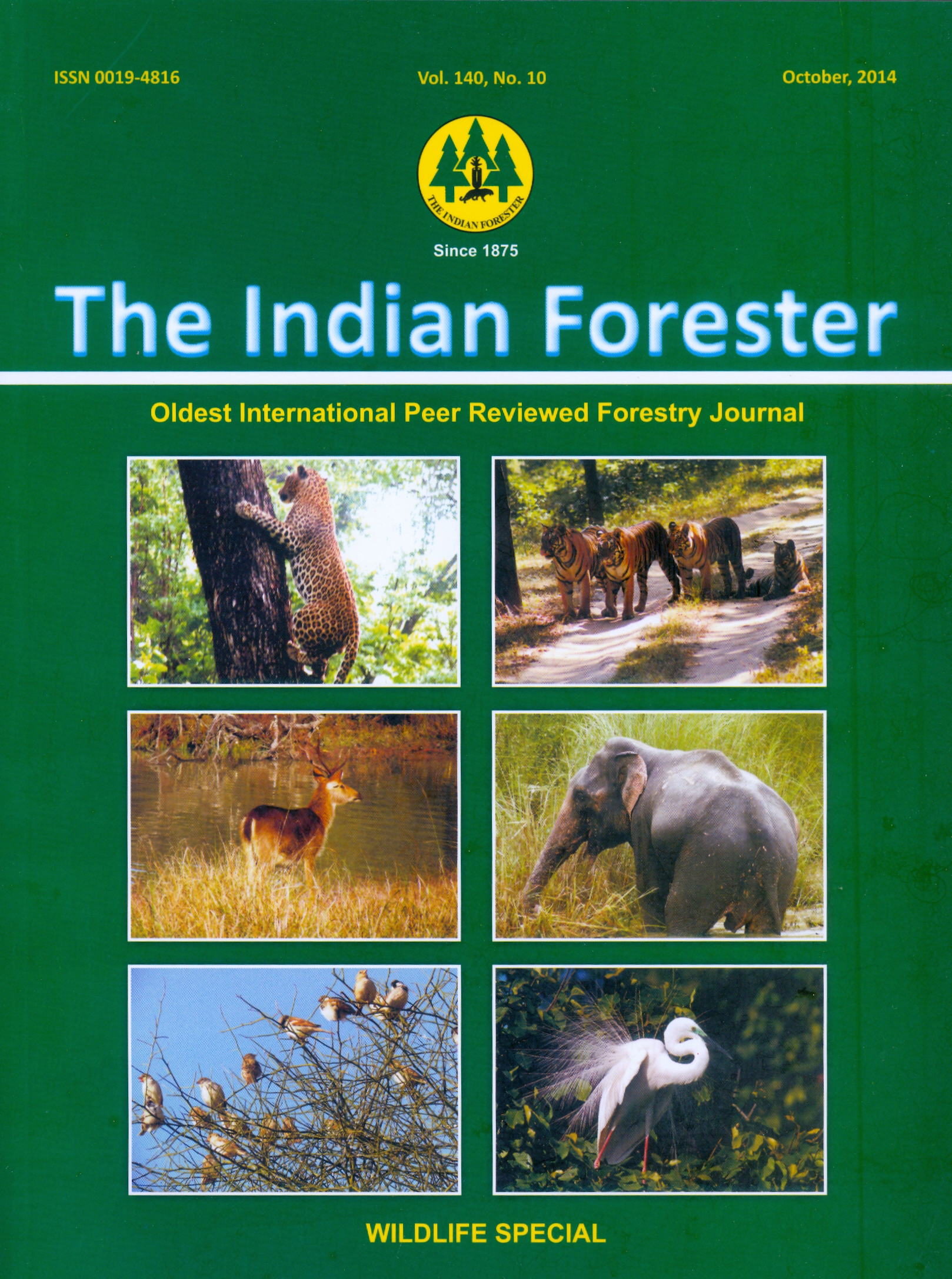Habitat Study of Sloth Bear in Dalma Wildlife Sanctuary, Jamshedpur
DOI:
https://doi.org/10.36808/if/2014/v140i10/53471Keywords:
Habitat, Foraging, Viable Population, Dry Deciduous Forest.Abstract
The hilly-terrain of the sanctuary with its dense forest canopy along with the high availability of food and water makes it self-sufficient and capable of sustaining wild animals. Some direct methods like line transact method, water hole technique, roadside survey and indirect methods were used for monitoring the behavior of sloth bear. A total of 97 signs (both direct and indirect) of sloth bear were encountered in 10 transects taken in the 7 selected zones of Sanctuary. The current study has revealed that a viable population of sloth bear is found in Dalma Wildlife Sanctuary. The indirect evidences of sloth bear were at a higher side in the deep forest in comparison to the area adjoining to villages. The study also revealed the fact that the visit of sloth bear was more frequent in and around the fruit bearing trees such as mahua, ber and chalta, etc. A special kind of foraging habitat was also noticed as shown by the soil digs encountered, endorses the fact that sloth bear preferred eating red ants in the study area.References
Champion H.G. and Seth S.K. (1968). A Revised Survey of the Forest Types of India. Government of India Press, New Delhi.
Odum, E.P. (1996). Fundamentals of ecology. W. B. Sanders Company, USA, pp:574.
Downloads
Download data is not yet available.
Downloads
How to Cite
Rani, S., Mahato, S. K., & Mishra, A. T. (2014). Habitat Study of Sloth Bear in Dalma Wildlife Sanctuary, Jamshedpur. Indian Forester, 140(10), 960–964. https://doi.org/10.36808/if/2014/v140i10/53471
Issue
Section
Articles
License
Unless otherwise stated, copyright or similar rights in all materials presented on the site, including graphical images, are owned by Indian Forester.





